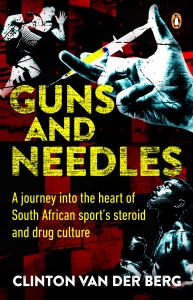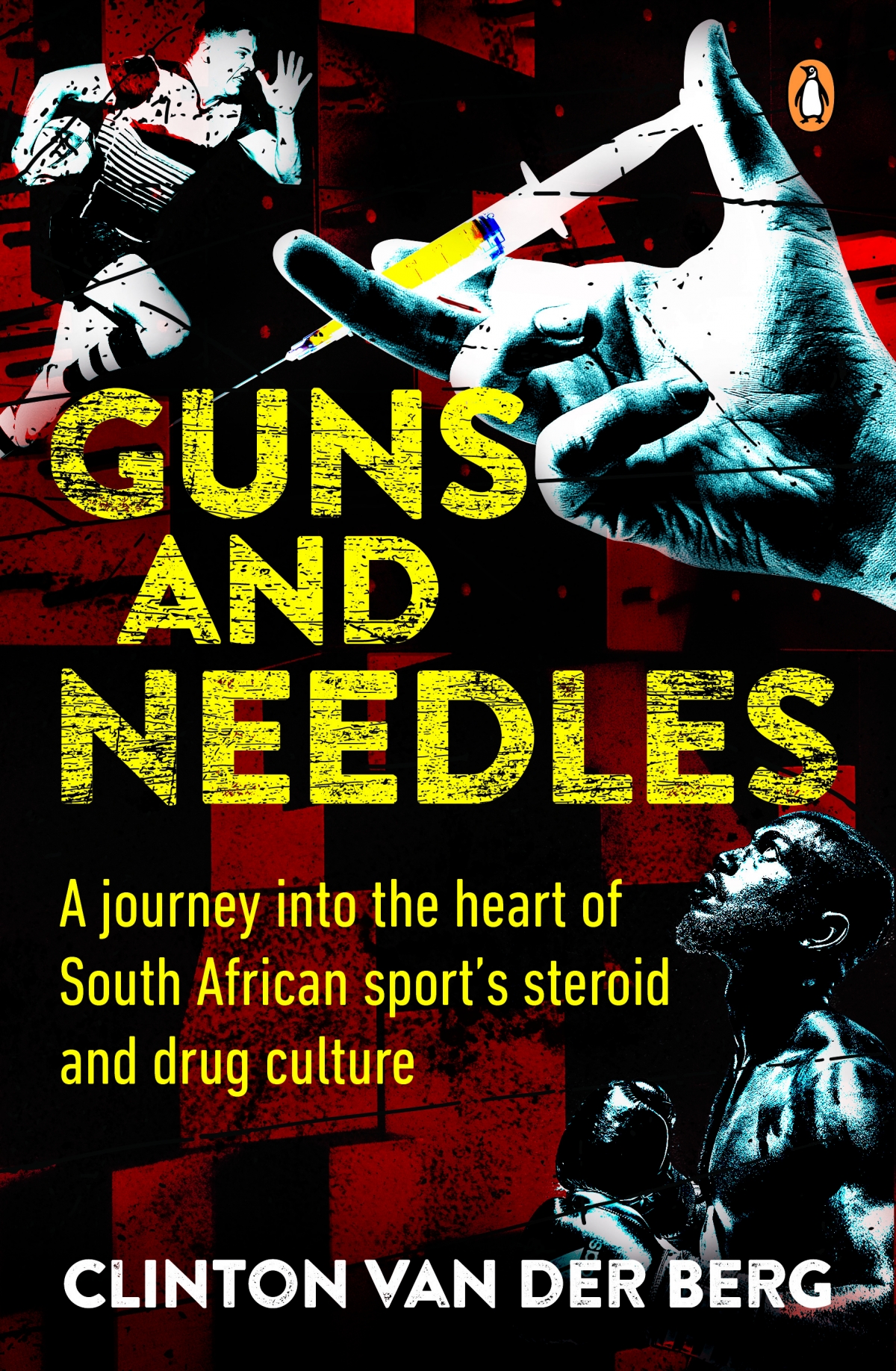
South Africa revels in its reputation as a sport-loving country. Yet just beneath the surface lurks a dark underbelly that reeks of cheating and illicit shenanigans, where shady characters and willing athletes are prepared to do whatever it takes to come out on top. Guns and Needles infiltrates an extraordinary environment that includes the story of the youngest athlete, who happens to be a South African, to ever test positive. With doping numbers far higher than the international average, prominent sportswriter Clinton van der Berg probes why this is so.
Introduction
Chasing the Juice
‘One early Sunday morning I got a call telling me Bull is dead. I raced to his flat, only to find that his body had already been removed. They told me about the syringe sold to him to give him muscles but [which] killed him instead.’
Theo Pieterse, Ithembelihle Comprehensive High School rugby coach
The idea for this book germinated for at least fifteen years. I had hung around gyms and sports fields long enough to have a good sense of steroids and who might be using them. I was curious in the way that anyone would be curious. Few talked about doping, and yet those who did suggested that it was ubiquitous. There was also the constant drip-drip in the news media, something I first recalled from 1988, when Ben Johnson’s exploits swept everyone else off the front page.
His dope bust at the Olympic Games in South Korea was extraordinary news, easily the most sensational positive doping test in sports history – at the time. His bloodshot eyes and bulging upper torso are images that are seared into my brain, even years after the sordid affair came to light.
A dozen years later I was at the Sydney Olympic Games, fortunate to watch Marion Jones at her peak. The regal American sprinter’s three gold medals were won in a blaze of speed and elegance. Yet in 2007 she was stripped of all her medals. And then jail beckoned.
South Africa was not excluded from the steroid craze, and through the 1990s and 2000s a succession of athletes saw their kingdoms come crashing down as the authorities flexed their muscle. Big names and no-names alike were exposed.
And they continue to get caught.
No sport was spared, and for many years local schoolboy rugby, especially, had a reputation as a hotbed for drug cheats. It is a reputation that endures. There are enough gossip and anecdotal stories to surmise that not all schoolboy players are on the level. What has emerged in recent years is that steroids were originally taken to enhance performance. Nowadays, it seems, some boys take them purely for vanity. The buffer, the better.
Yet rugby was not the only sport implicated. The story of Liza de Villiers, the youngest athlete ever caught, had long intrigued me. I often wondered what had become of her after her dreams of glory vanished amid a scarcely believable doping controversy in the 1990s. I first messaged her in January 2012. She never responded. I reached out to athletes and acquaintances, desperate to track her down and, if I was fortunate, hear her story.
Learning that she lived in Johannesburg and might be contactable, I reached out again in April 2021. Again, she did not respond. A week afterwards, I happened upon a number and WhatsApped her. We spoke and, finally, met. Her incredible story can be found in these pages.
“The one constant throughout the years is the reality that steroids are popular … because they work.”
At times, I have felt ambivalent about steroid use, partly because it is a world I very briefly inhabited. My own story is told elsewhere in the book and suffice to say that my experience with needles and ampoules was fleeting and no one was hurt. To misquote Marlon Brando in On the Waterfront, I wasn’t a contender. Years after my own foray into that world, I learned that bodybuilders were doing deals from their car boots in the car park at the local gym.
The world of steroids periodically entered and drifted out of my life. In 2012, my then brother-in-law, Ivan Ukhov, won gold in the high jump at the London Olympics. A few years later, amid the Russian doping scandal that enveloped the country’s national athletes, Ivan was stripped of sport’s highest honour. Although he never once failed a doping test, he was implicated in the resulting fallout after revelations about the country’s state-sponsored doping programme came to light.
Closer to home, rugby has struggled to shake its image as a haven for drug cheats, but the habit persists elsewhere too – in boxing, athletics, bodybuilding and other sporting pursuits. For years, I jotted down notes and collected newspaper clippings. As the number of cases grew, my pile got higher.
The one constant throughout the years is the reality that steroids are popular … because they work. It is this immutable truth that keeps pulling athletes in, even though the risks are so extreme. The ability to get bigger, stronger, faster; the ability to recover quicker – steroids have a seductive, powerful appeal.
Despite their popularity, their use remains illegal in South Africa – without a prescription, that is. Technically, any individual caught with anabolic steroids – and no valid prescription – can be arrested and charged. The reality, however, is often far different. The enforcement of such laws is lax, and attention is usually focused on steroid distributors and related black-market enterprises. Minor violations are usually given little attention – unless the guilty party is an elite-level athlete.
Local legislation does allow for punishment of up to ten years in prison, but the law is not chasing down single users. At worst, users face a small fine and a criminal record. First-time offenders may get off with a warning. This is in stark contrast to local sport authorities, who do pursue individuals. Guilty athletes are not sent to jail, but a purgatory awaits in the form of bans, public shaming and, often, career death.
I have intentionally avoided turning this into a scientific or data-led book. There are enough of those. This very South African story is a wild journey through a sporting environment that is frequently glorious, but too often has a dark, troubling underbelly.”
Extracted from Guns and Needles by Clinton van der Berg, out now.
YOU MAY ALSO ENJOY









